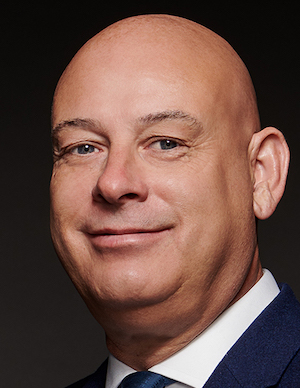If you think that custody banks are unexciting, process-driven and commoditised institutions with very little innovation, then think again.
This article is written by Clive Bellows, member of the Northern Trust European Management Committee and Head of Global Fund Services for Europe, the Middle East and Africa.

The last decade has seen tremendous innovation by asset servicers, fuelled by automation and technological advancements, as well as the growing complexity and globalisation of the investment industry. In a world where cybersecurity, artificial intelligence, cloud computing, advanced data analytics and blockchain are creating both challenges and opportunities, custodians are repositioning themselves for the future.
Amidst all this rapid change, we should remember that it is not when these re-engineered custodians emerge as much as how they get there that will be key. For some, embracing the future has meant jumping on the technology bandwagon and branding themselves as technology or data analytics providers before anything else. Others are taking a step back, and considering how to innovate with technology while remaining relationship-driven service companies at their core.
“It is not when these re-engineered custodians emerge as much as how they get there that will be key.”
It’s easy to get carried away by the hype. Asset servicers need to remember that they have always had a duty of care, and amidst all of the excitement that responsibility has not diminished. They are, first and foremost, guardians of their clients’ assets, and that must remain their primary focus. Therefore, providers must look to the future, but they must also ensure that they remember their past and get the basics right.
Transformation
The transformation of asset servicing has been significant. HSBC, in its Custody 2025 report, highlights that at the beginning of the Millennium, a typical Request for Proposal (RFP) for a $10 billion custody mandate would have been around 20 pages long, with the majority of questions focused on basic services like safekeeping, settlements, corporate actions, and tax services.1 Asset managers and other clients would choose their provider based on how successfully a custodian could provide these services.
“Going forward, providers will be judged on their value-added activities such as client service, knowledge provision, data management, liquidity and risk management, and also their own ability to manage cyber risk.”
Today these services are taken for granted. Clients assume all of this as standard and expect activities like foreign exchange and capital markets services, cash management, analytical services such as performance measurement and investment compliance monitoring, and operations services like middle office and fund administration. Looking to the future, HSBC suggests, providers will be judged on their value-added activities such as client service, knowledge provision, data management, liquidity and risk management and their own ability to manage cyber risk.
To be competitive, service providers will have to be holistic in their approach, but they must remember the continued importance of the ‘bricks and mortar’ of custody. This isn’t always the easiest thing to focus on, especially when technological change provides new bells and whistles and efficiencies to pass on to clients.
Technology boom
The technology boom has had a significant impact on how businesses operate, and how their business models are changing. For example, custodians are moving up the value chain – increasing their focus on the front and middle office needs of their clients. Some are signalling through acquisitions that gaining access to the client front office is core to their business strategy. However, the market’s initial reaction has been mixed and the long-term success and value of these transactions remains to be seen.
Technology is an essential catalyst for the future of the investment industry, but it cannot solve every problem. Not every company can successfully evolve into an Apple or a Google and technology rhetoric can sometimes be misleading. Too much focus on technology alone risks losing sight of the core mission. Clients need to know their providers are going to keep their assets safe, with meaningful emphasis on transparency, integrity and regulatory changes.
Custodian 3.0
“Custodian 3.0 cannot be all things to all people. Clients will expect access to the best technology at any given point of time – enabling them to take advantage of new platforms and strategies to help maximise returns and minimise risk.”
Of course, emerging technologies will drive a layer of more innovative solutions. The custodian of the future – Custodian 3.0 – cannot be all things to all people. Clients will expect access to the best technology at any given point of time – enabling them to take advantage of new platforms and strategies to help maximise returns and minimise risk. While these custodians should provide services through technology, they shouldn’t attempt to reinvent themselves and transition into a pure technology company. Rather, they must continue to focus on maintaining the core principles of protecting assets and supporting clients’ investment strategies.
Providers should be adaptive and flexible. They should have a fundamental understanding of each individual client, how their businesses are unique and how to provide strategic benefit. They should also be agnostic, but holistic, recognising that clients do not operate on a ‘one size fits all’ operating model. Clients will have different needs across the value chain, based on their investment strategies, their risk appetite, and the asset mix that they manage.
For example, asset managers (and, increasingly, asset owners) need to be able to choose the Order Management System (OMS) and Execution Management System (EMS) that works best for them. They prefer to pick and choose based on the functionalities that they need at any given time, rather than be tied to a specific system as part of a broader relationship. This is one reason why Northern Trust is building a technology architecture (Northern Trust MatrixTM) that enables the integration of new platforms and strategies seamlessly and in real time. It’s why Northern Trust works with a number of market leading OMS providers, such as Bloomberg AIM, Aladdin, and SimCorp.
Going forward, asset servicers must place client interaction and client services at the forefront in terms of priorities – taking on consultancy- type functions, such as helping clients navigate new markets and regulations. They should also become a data consolidator, and data creator, providing strategically valuable information to clients. Alongside this comes the embracing of new technologies, such as servicing new asset types like digital keys and crypto-currencies as well as creating a range of reporting from custody, accounting and investment book of record (IBOR) with Application Programming Interfaces (APIs). This type of technology enables asset managers and asset owners to seamlessly plug multiple tools into an API solution for analysis, risk management, risk modelling, order management and more.
“Those who survive will be nimble and innovative, but they must remain committed to their core principles and to their client servicing philosophies.”
Our future custodian should recognise that the value of information, insights and analytics are becoming increasingly important – a strategic asset in its own right. Evolving distribution support capabilities, which capture real time transfer agency information, supplement it with third-party data, perform advanced analytics and create artificial intelligence, are just one example of how high value data can be created. Custodians will need to adapt to new technologies and rapidly evolving market practices. For example, last year Northern Trust launched the first commercial deployment of blockchain technology for private equity, and we have now enhanced our system so that audit firms can carry out audits of private equity lifecycle events directly from the blockchain. In the future, such services will become standard.
The asset management industry is facing a myriad of pressures, from fees, cost compression to regulatory requirements like MiFID II to governance considerations, all within an environment where technology and market practice are changing at breakneck speed. On top of this, asset managers are facing increasing amounts of political uncertainty. All these factors combine to draw down profitability. Therefore, asset servicers will be expected to have an intensive understanding of regulation and market practice trends so that clients can rely on them to help navigate all this change. Delivering value to clients means that providers must find ways to lower execution costs, reduce risk, support regulatory compliance, increase transparency, enhance efficiency, and achieve better overall trading and performance outcomes.
Above all, custodians will have to understand their clients in order to deliver meaningful value, and must be prepared to work closely with clients, regulators, and other market participants, like brokers and exchanges, as they themselves undergo transformations and continuously adapt their business models and services.
Technology: No substitute for client service
There’s a lot of talk about the future of asset servicing and the disruption/disintermediation of securities services. Amongst all that, it is easy to lose sight of what’s important. Asset servicers have long served a valued and essential function since the advent of many of the world’s stock markets. Some, perhaps many, of these institutions will continue to do so in the future. Those who excel will be nimble and innovative, but they must remain committed to their core principles and to their client servicing philosophies. Leveraging technology and data to create advanced solutions for their clients’ needs will become the new service proposition.
Custodian 3.0 may be wildly different from what we know today – nevertheless just like its predecessors, it will have to put clients first.
1 HSBC “Custody in 2025” 30 April 2017 https://www.gbm.hsbc.com/insights/securities-services/custody-in- 2025













